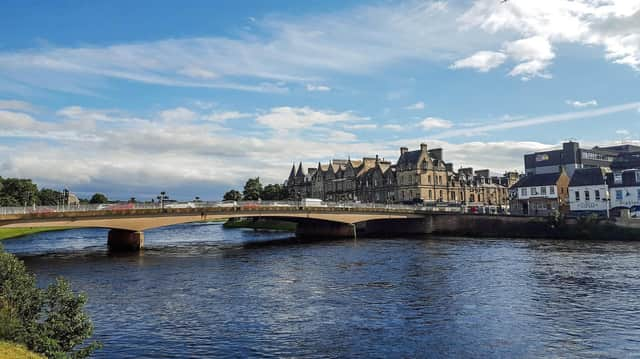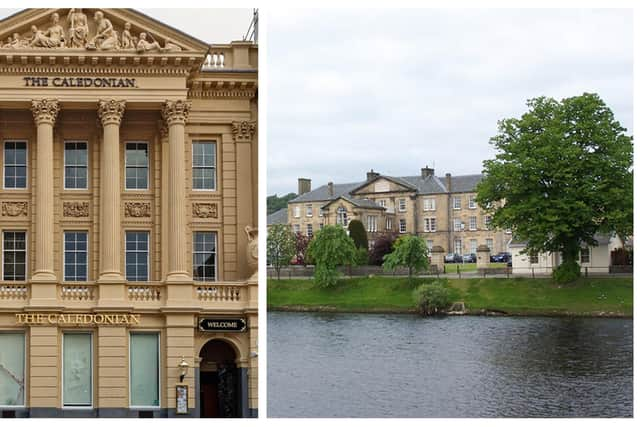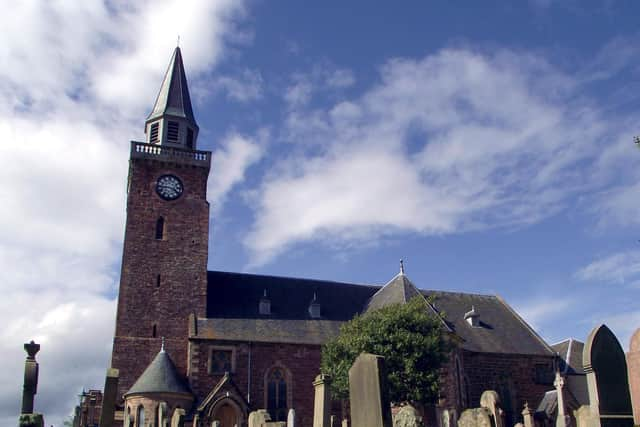New maps charts deep links between Inverness and the slave trade


Now the full extent of Inverness’s links to the slave trade have been charted in a new map and walking tour by historian Dr David Alston, who has for many years researched the Highlanders who made their fortunes in the plantations of the Caribbean and South America and the money that they brought back home.
Dr Alston said the links between Inverness and the slave trade were vast and that he had often been surprised by the extent of the connections.
He said: “The more you look, the more you find.


Advertisement
Hide AdAdvertisement
Hide Ad“I have often been surprised by what I have found. When I first started looking at this topic I thought that the connections might have been a little local oddity but then the more you learn, the more you realise that these connections run right across society and also right across the Highlands.
“It also shows you the pernicious way that slavery reached out and sucked people in.
“This was where you made your money. If you were a young man in the early 1800s, do you want to stay at home or do you want to the excitement and opportunity of going to the Carribean, to the slave plantations?”.


Inverness landmarks on the tour include the old Caledonian Bank, which opened in 1838 under chairman John Ross of Berbice, the son of a Golspie carpenter who went to to Berbice in Guyana, South America, where he became a plantation manager and slave owner.
John Ross was later praised for his role in suppressing a slave rising in Berbice in 1814, after which six Africans were hung and beheaded. In 1834, he received £10,000 compensation for the freedom of his slaves.
Inverness Royal Academy is also included on the route given money to build the school came from a number of local merchants and slave owners in the British colonies. Mr Alston said he would like to see a plaque on the building to reflect who helped to found the school.
In 1804, almost one in every 10 pupils at the school was from the Caribbean, including those who were born to Scots and ‘free coloured’ women, Dr Alston said.
He added: “It was more common for enslaved women to be made free than was the case for enslaved men – often because they were the mothers of children born to white fathers. These men and women and their descendents were known as ‘free coloured’ people. This was how they identified themselves and distinguished themselves from enslaved people and the small number of free black people.”
Advertisement
Hide AdAdvertisement
Hide AdThe school roll at the academy included the four illegitimate children of George Inglis – the brother of William Inglis, the Provost of Inverness – and Susanne Kerr. They were all born in Demerara in Guyana. In her will, which is held in Inverness Museum, Susanne describes herself as a ‘free mulatto native of the island of St Vincent.”
The High Kirk of Inverness offers another link to the slave trade. Here in 1812, a former enslaved African known as Black John was baptised here as an adult. A slave in Berbice, he was brought to the Highlands by his master, James Baillie Fraser of Reelig. Black John spent many years at Reelig and travelled through the West Highlands with Fraser with the pair then travelling to India, along with Fraser’s brother.
The memorial stone for James Baillie of Dochfour, a slave factor in St Vincent, who traded in slaves brought from Africa and then sold the into the Caribbean, is also included in the city guide. Baillie’s brother Evan was a part-owner of a Bristol slave ship and the captain, a James Fraser, hailed from Glen Convinth.
Money earned from the slave trade also helped to fund the building of the old Royal Northern Infirmary, which opened in 1802.
Now the executive offie of the University of the Highlands and Islands, a plaque highlights the founders of the infirmary. It remains one of the few acknowledgements of the use of profits from the slave plantations and the only one which is written in Gaelic.
A message from the Editor:Thank you for reading this story on our website. While I have your attention, I also have an important request to make of you.With the coronavirus lockdown having a major impact on many of our advertisers - and consequently the revenue we receive - we are more reliant than ever on you taking out a digital subscription.Subscribe to scotsman.com and enjoy unlimited access to Scottish news and information online and on our app. With a digital subscription, you can read more than 5 articles, see fewer ads, enjoy faster load times, and get access to exclusive newsletters and content. Visit https://www.scotsman.com/subscriptions now to sign up.
Our journalism costs money and we rely on advertising, print and digital revenues to help to support them. By supporting us, we are able to support you in providing trusted, fact-checked content for this website.
Joy Yates
Editorial Director